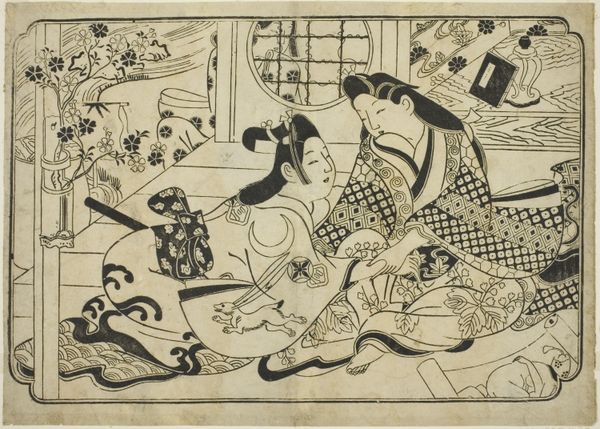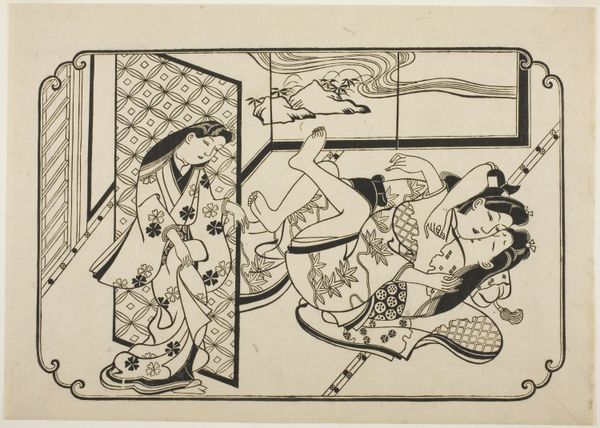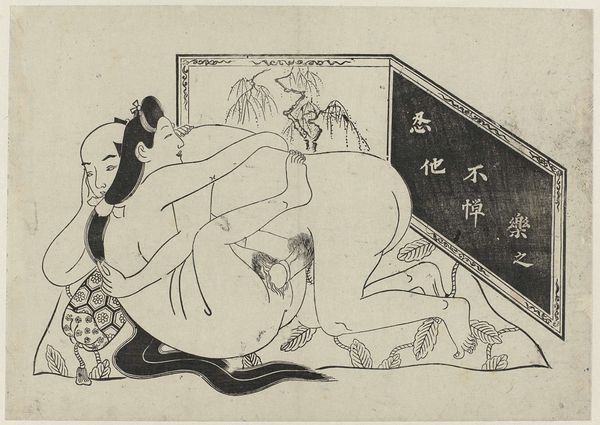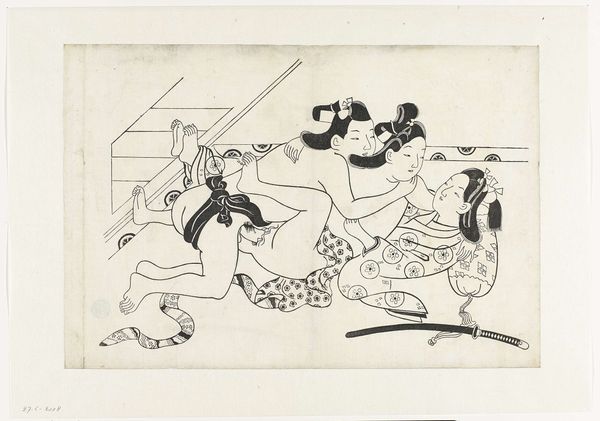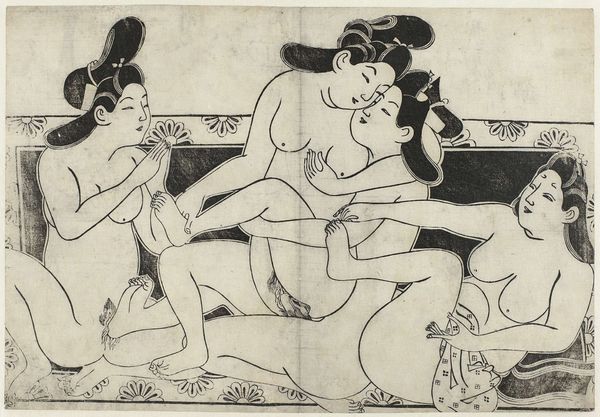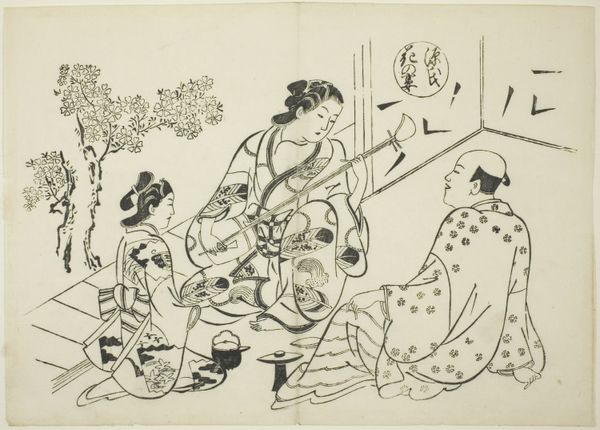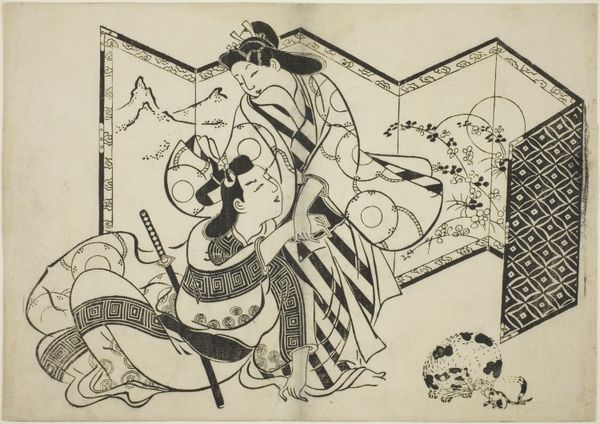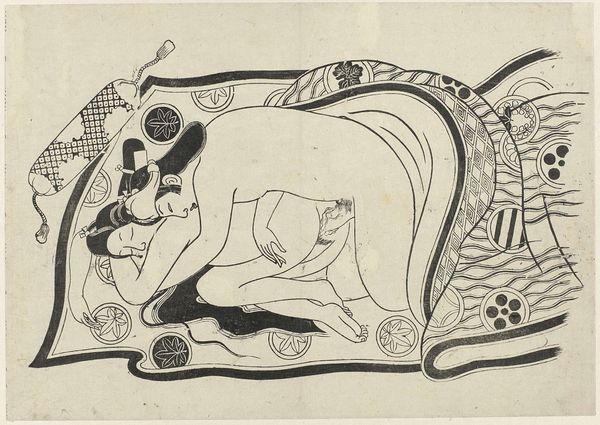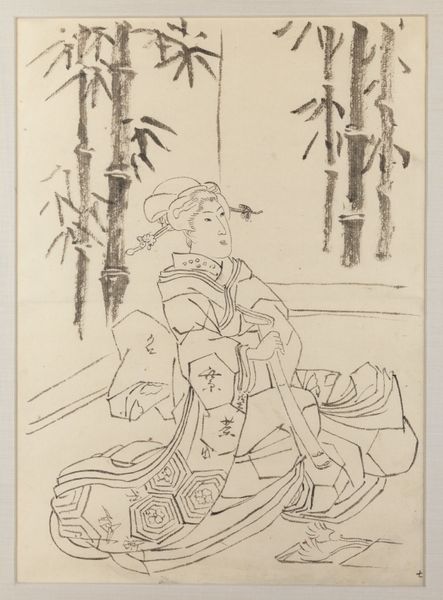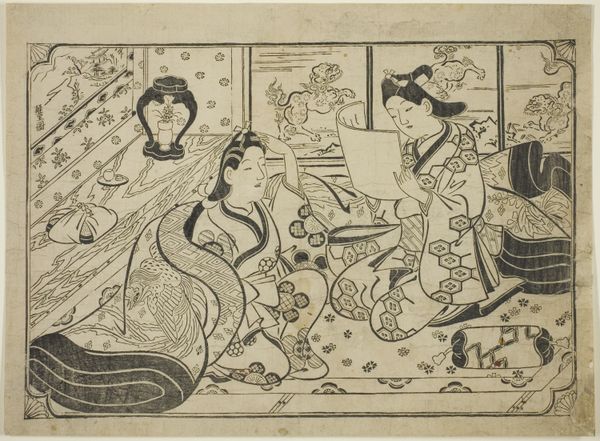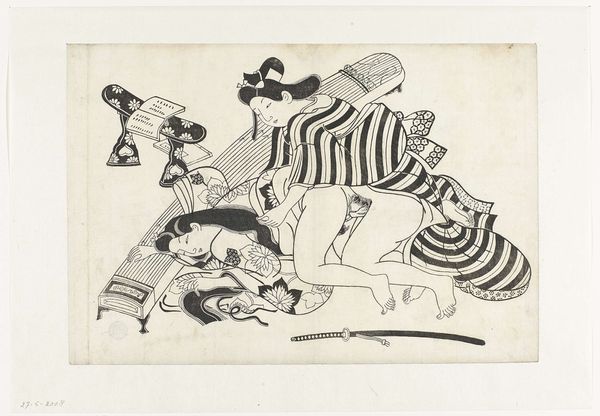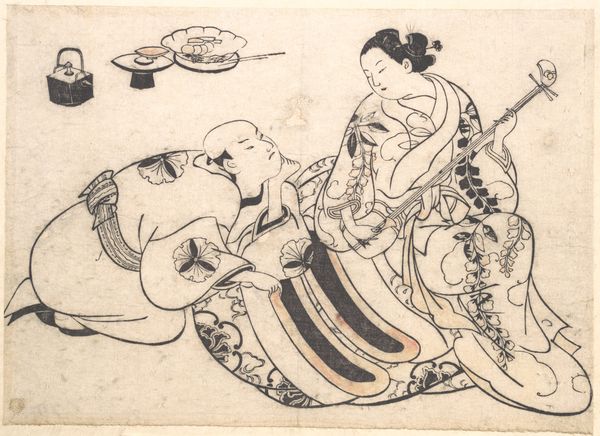
print, paper, ink, woodcut
# print
#
pen illustration
#
asian-art
#
ukiyo-e
#
figuration
#
paper
#
ink
#
woodcut
#
line
#
genre-painting
#
erotic-art
Dimensions: 27.1 × 38.4 cm
Copyright: Public Domain
Curator: This black and white print, called "Flirting Lovers," was created by Hishikawa Moronobu between 1673 and 1681. It employs ink and woodcut techniques on paper. Editor: It has an undeniable erotic charge, doesn’t it? There's an immediate intimacy. The intertwining figures seem to defy the restrictive social conventions we might assume governed the period. Curator: Absolutely. Considering Moronobu’s work often pushed against those very boundaries. Ukiyo-e prints like these, mass produced and widely distributed, represent a shift in artistic production. What was once the realm of the elite court was suddenly available to the burgeoning merchant classes of Edo. The materials were relatively inexpensive: paper, ink, wood. The labor, however, was highly specialized, with different artisans responsible for carving the blocks, printing, and even publishing. Editor: Exactly. And that access point reveals so much about gender and social hierarchies in 17th century Japan. The choice to depict same-sex intimacy also speaks to shifting attitudes and desires, presenting alternate forms of power and subversion within a tightly controlled society. I wonder how many copies of "Flirting Lovers" subverted mainstream culture through private ownership and erotic pleasure? Curator: A crucial question. Thinking materially, consider the woodcut technique. The bold, unwavering lines and simplified forms suggest efficiency and reproducibility. Yet, even within that constraint, Moronobu achieves a surprising amount of detail, particularly in the figures' flowing robes and delicate hairstyles. This piece epitomizes his blend of refined elegance and mass appeal. Editor: This really opens a window into the lives, desires, and quiet rebellions simmering within the social structure of Edo-era Japan. To ponder on the print’s dissemination invites us to examine how marginalized stories get amplified. Curator: Indeed, considering this print and its place in a broader landscape of artistic production makes it possible to delve into the world that made this object. Editor: It makes you consider how artworks can sometimes challenge conventional structures.
Comments
No comments
Be the first to comment and join the conversation on the ultimate creative platform.
